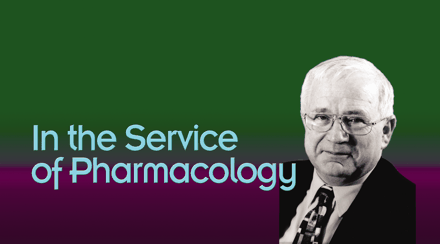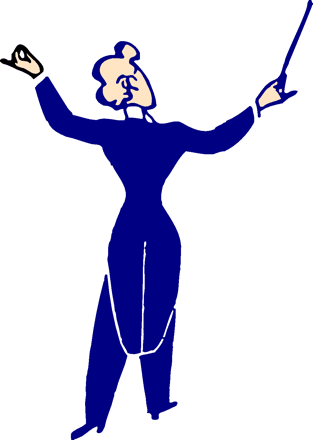In the Service of Pharmacology

Paul Vanhoutte has worked at a variety of institutions worldwide and has a publication list that includes over 460 original research papers and almost as many additional reviews and book chapters. Educated (MD and PhD) in Belgium and subsequently tenured on the faculties of the University of Antwerp (1973–1981), the Mayo Clinic (1981–1989), and Baylor College of Medicine (1989–1995), he is extensively familiar with both American and European biomedical science. For the past ten years, he has worked not in academia, but has pursued his career largely as an industrial pharmacologist (predominantly in France). Despite the apparent diversity of background, Vanhoutte maintains that his professional interests have always been driven by the application of science toward human health. At its Fourteenth World Congress this summer, the International Union of Pharmacology (IUPHAR) elected Vanhoutte to be President for the next four years. He is especially enthusiastic about the venue of the Fifteenth World Congress in 2006, in Beijing. As he presides over IUPHAR, Vanhoutte is hopeful of bringing the messages of pharmacology to as much of the world as possible. The financial necessities of doing so pose the greatest challenge for Vanhoutte and his colleagues of the IUPHAR Executive Committee.
MI: You’ve just been elected President of IUPHAR (International Union of Pharmacology). What is your vision for the organization?
PV: A very important activity has been the work of IUPHAR’s receptor and channel Nomenclature Committee (NC-IUPHAR). IUPHAR has made an impact and has become highly regarded through its nomenclature work. I hope by the end of the year that we would have achieved the completion of the IUPHAR Receptor Database, which has so far been funded through a grant of Incyte Genomics, and which we want to make accessible to all pharmacologists. In many emerging countries there are some very good people trying to teach pharmacology, and we need to find ways to provide them with information so they can teach adequately. I basically want access to the database to be free of charge, which demands considerable financial effort. We may have to ask for some help from the richer countries so that we can include emerging countries. We would also like to sponsor more travel awards to the IUPHAR meetings. Finally, I would like to continue to coalesce all the aspects of pharmacology under the umbrella of IUPHAR so we can sustain pharmacology as a discipline, as a scientific entity. That’s what I would like to achieve.
MI: To address you now not just as a pharmacologist, but as an industrial pharmacologist: Why do you care whether less rich countries have access to IUPHAR?
PV: Because I’m in the industry not as an industrialist, but as a scientist, as an applied scientist. My basic training is as an MD. So I went into medicine not for the money. I wanted to help people. I wanted to save human lives. I often joke that I practiced medicine for two weeks and decided that in order to save human lives, I had to get out of the clinic and get into the lab. So, I went into research. As a pharmacologist, I built up a lab first in Belgium, and then I joined the Mayo clinic, and then I went to Baylor. At my peak at Mayo, I think I must have had fifteen postdocs in my little unit. I always give the same comparison: You start off your life as a virtuoso, all by yourself. Then, at midlife, you have a chamber orchestra, and ultimately, upon directing discovery research in a drug company, I found in my case, that’s a grand symphony. There, you can really have an impact, because if you are successful, if you come up with novel and useful drugs, you are engaged in a very medical activity. For me, it is not, and never was, a business. I really feel that I’m a scientist. I happen to work in drug discovery, a program that is by definition high-quality and applied pharmacology. Industrial research is not science for the sake of science—not art for art’s sake—but it has to keep in mind that, after all, what we want to do is improve existing therapies, and that’s a very pharmacological preoccupation. I think, to be really part of industrial research, one’s role is not merely to take, but primarily to give, to contribute. So when I was asked in 1989 to head the IUPHAR receptor nomenclature committee—little did I know how much work it would become—I thought, yes, somebody has to do those things. And so that’s how I got into the more service part of my activity.
MI: So you started out as an MD to provide service for patients, and then you talk about this move from virtuoso to symphony leader. How did service change for you as you made that move?
PV: When I was at university of course, my major service duties were teaching and training people. I’ve trained many young people that are now having quite remarkable careers, and I’m very proud of them. Once I moved to industry, I think, again, if you look at it as an applied science with the ultimate goal of improved therapy, then the whole activity is service. But when I talk about service at the level of IUPHAR, the point is to distribute information, and to make sure that people who cannot necessarily go to the library—those people who have to teach pharmacology in less well equipped places—that those people have up-to-date information.
MI: So, in a way, the people you now seek to serve have become harder to reach.
PV: Yes. The electronic revolution is such a good thing, provided that everyone has access to it—provided there is no charge. At the moment, if you charge in hard currency for anything, you cut many people out. But I also continue to serve by teaching in the traditional sense. I’m an honorary professor at several universities, and I do some teaching in China. And of course, as you remain involved in science and as you grow and discuss your data, that’s teaching, too.
MI: As someone with a service orientation, what kinds of adjustment have you had to make personally in having gone into industrial pharmacology?
PV: Well, actually, very few. I have been able to continue my activities with IUPHAR, and I have remained as Editor-in-Chief of The Journal of Cardiovascular Pharmacology, and so I still do many of the things that are typical of academicians. I have also been able to go to scientific meetings that are judged of importance, most of the time for the company, but often of importance just for me as a scientist. I still had postdocs working in research labs. I continue to consider myself as an applied scientist, because starting from basic discoveries, I want to understand pathophysiology and what you can do with drugs. You cannot dissociate basic and applied pharmacology—the goal has always been to understand and treat disease.
MI: What changes have you seen over the last ten years, since you’ve been in industry, in the strategies for bringing applied science to the market place?
PV: The industry is in constant evolution, even revolution. Although I sometimes regret that the pharmaceutical industry is too much driven by financial considerations, life expectancy and hygiene have been greatly advanced by the pharmaceutical industry. Another phenomenon has been the ever-ongoing game of mergers, under the false ideal that bigger is better, and as a consequence the destruction of many, many professional lives, not always accompanied by an improvement of discoveries. And the industry now faces market pressures that are much more severe than previously. From invention to hitting the market, one can now say that getting a new drug to market is roughly a billion-dollar affair. In order to withstand such high costs, pharmaceutical companies must make a profit. It’s a very long-term investment, because you start paying now, and you begin to cash in, if you’re very good, in eleven or twelve years down the line. The public is not used to that.
MI: What about technological breakthroughs—how have they affected the industry?
PV: The most meaningful way to develop new treatments is to address diseases that affect large groups of people. Right now we hear a lot about stem cells and gene therapy, and all of that is great. But such measures create therapy for the rich, because those things will be so expensive that no health care system will be able to apply it to very large groups. That’s my prediction. And if you look at certain of the diseases of the heart, you’re not going to be able to implant devices in all the people that have the disease. Even if you put all the cardiologists to work doing nothing else but implanting heart devices, you still won’t be able to treat all the needy people, whereas drugs are things that can be given to large cohorts of patients.
MI: So in a way, the problem is that the explosion of knowledge and technology is creating smaller markets?
PV: Probably. We will evolve, through genomics, toward defining better the patients that will receive a certain drug or a certain treatment. The problem from the industry’s point of view, however, remains that the smaller the niche, the smaller the market, and the more costly it becomes to develop a drug for that particular market.
MI: Because you’re pursuing so many therapies at the same time?
PV: Well, not precisely that. More simply, the one billion dollars necessary to bring a drug to market, divided by a small number of patients, translates into less return on your (very great) investment. The industry is usually not in favor of focusing on a well-defined subgroup of patients. This reluctance is a problem for many of the third-world diseases; the cost of getting a drug approved for, say for sleeping sickness“ caused by the tsetse fly, well the cost would still be a billion dollars. But many people that will need it will not be able to afford the drug. So what does an industrialist do?
MI: You tell me!
PV: Well, he says, “Let’s not focus on this third-world disease!”
MI: So you just have to ignore the small niches of patients.
PV: Yes, at least those that are economically nonviable. Every time we start a new research program, one of the first questions that one asks oneself is, “Is there a market?” We simply have to get something back from the phenomenal investment that we’re making.
MI: It sounds like you’re caught in the middle: on the one hand, you attempt to represent your service orientation to pharmaceutical industrial insiders, and on the other hand, you must communicate the hard realities of drug development costs to the public.
PV: Well, as a scientist and as a physician, this situation annoys me greatly. I wish we could do more. But, if we spent a billion dollars on a disease, and we have no income from the effort, no company will survive very long. We just have to be aware of that. It’s just a matter of fact.
MI: You say that you are sometimes annoyed by the way the realities of the pharmaceutical industry can clash with your devotion to a life of service. Where does this sense of service come from? Do you think it’s generational? Cultural?
PV: Well, I consider pharmacology as a very medical affair. If a patient comes to see the doctor, even for a little thing, the doctor has to consider possible complications. I think that’s where it comes from. I was trained at a time that medicine was my god. You treat the whole patient, and I’ve kept that. And I think to do that and to continue to do that is the only way to save pharmacology as a discipline. Otherwise, it will disappear. And it would be a shame, because it’s needed. There should be a program for teaching by experience, where one tries to understand the fate of drugs, not only at the level of an enzyme.
MI: You’re European and you’re Americanized…
PV: I am an American citizen. I am American by choice!
MI: Can you see differences in pharmacology between Americans and Europeans?
PV: Well, surprisingly, one bumps into the same problems everywhere. This commonality is positive in that solutions to problems for one group might be applied to another group. When I moved to France a few years ago, for example, there were four pharmacological societies: one for pharmacology, one for experimental pharmacology, one for clinical pharmacology, and one for therapeutics. And among a few people, we succeeded in grouping those four into one strong French pharmacological society. So that was the beginning of an effort to amalgamate pharmacology back into one, solid strong discipline—one that can talk and has impact. But in the U.S. we continue to have fragmentation: we have ASPET, we have the American Society of Clinical Pharmacology, the American College of Clinical Pharmacology, and the Western Society of Pharmacology.
MI: To take the French example, what do you think accounted for the prior splintering of pharmacology into separate societies?
PV: Well, people who talk the same language like to get together among themselves; it’s comfortable. Clinical pharmacologists may speak with a vocabulary that’s different from that of other pharmacologists. The other aspect is much more human: it’s territorial. We want separate societies so we can have our own officers, etc. And again what we are trying to do in IUPHAR is to encourage people under our auspices to go from bench to patient; we group our symposia around groups of people who talk about transfected cells, but who also talk about treating people. We want to return to one discipline of pharmacology. If I make an effort, for example, I can understand a molecular pharmacologist, even though I always say that I belong to a generation of scientists for whom an exon is a gas station. The point I’m trying to make, simply, is that we need to make language—the medium of knowledge—accessible.
- © American Society for Pharmacology and Experimental Theraputics 2002





